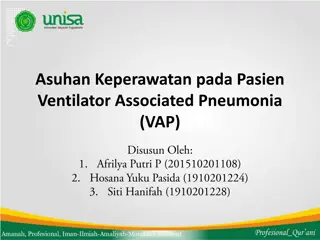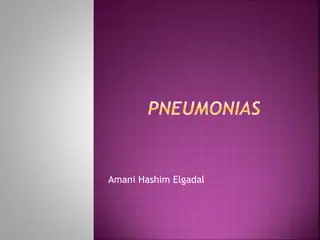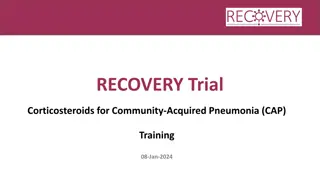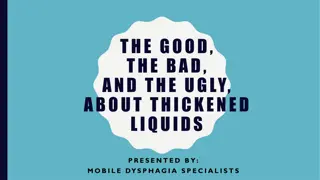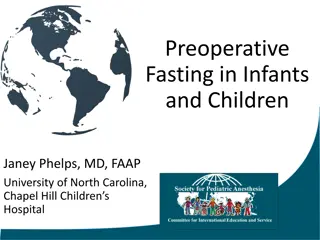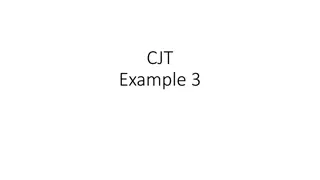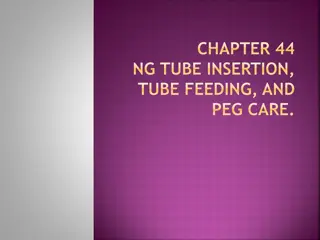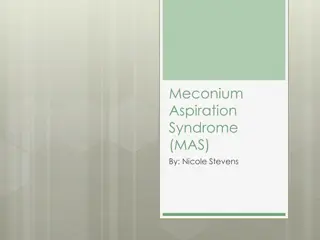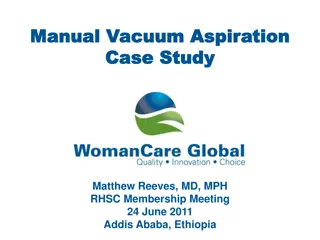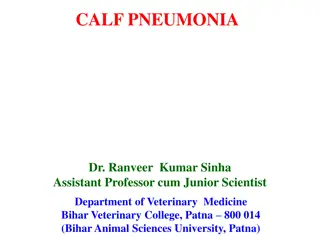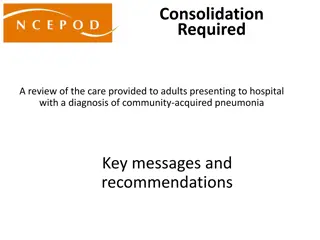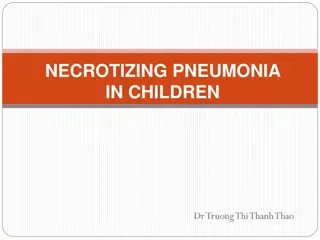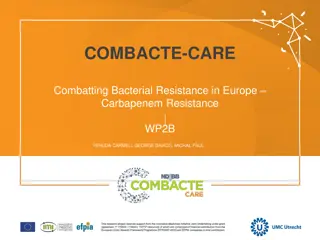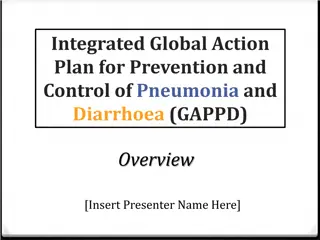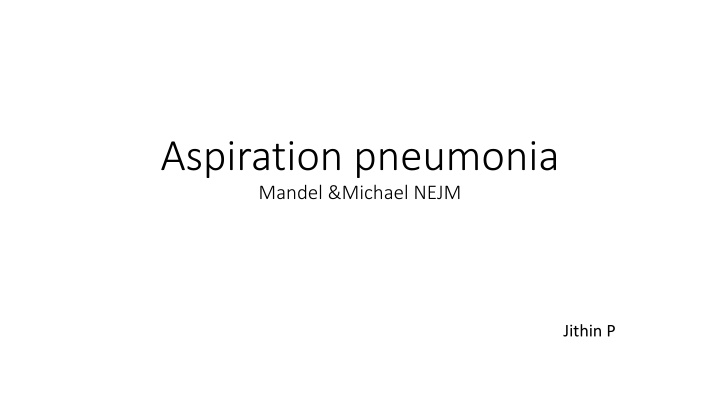
Changing Concepts of Aspiration Pneumonia: Insights and Implications
Explore the evolving understanding of aspiration pneumonia through microbiologic and pathogenetic perspectives, highlighting the role of lung microbiota, bacterial movement, inflammation, and pathogen shifts. Learn about the continuum of pneumonias and the prevalence of aspiration pneumonia in community-acquired cases.
Download Presentation

Please find below an Image/Link to download the presentation.
The content on the website is provided AS IS for your information and personal use only. It may not be sold, licensed, or shared on other websites without obtaining consent from the author. If you encounter any issues during the download, it is possible that the publisher has removed the file from their server.
You are allowed to download the files provided on this website for personal or commercial use, subject to the condition that they are used lawfully. All files are the property of their respective owners.
The content on the website is provided AS IS for your information and personal use only. It may not be sold, licensed, or shared on other websites without obtaining consent from the author.
E N D
Presentation Transcript
Aspiration pneumonia Mandel &Michael NEJM Jithin P
Changing Microbiologic and Pathogenetic Concepts of Aspiration Pneumonia A recent study of oral microbiota in patients with acute stroke identified 103 different bacterial phylotypes In the healthy state, the immune tone of the airways and alveoli appears to be calibrated by the bacteria constituting the lung microbiota The stability of the lung microbiome is probably maintained by a balance of immigration and elimination of bacteria and by feedback loops
Immigration involves bacterial movement from the oropharynx to the lung primarily by means of microaspiration, and elimination mainly occurs through ciliary clearance and coughing. Negative and positive feedback loops can suppress or magnify signals, respectively, such as those for bacterial growth.
An inflammatory event may lead to epithelial and endothelial injury, creating a positive feedback loop that can promote inflammation, disrupt bacterial homeostasis, and increase susceptibility to infection This may result in a rapid shift from a diverse microbial mixture to dominance by a single species (e.g., Streptococcus pneumoniae or Pseudomonas aeruginosa)
In the 1970s, anaerobes with or without aerobes were the predominant pathogens in aspiration pneumonia. More recently, there has been a shift to bacteria usually associated with community- and hospital-acquired pneumonias, and anaerobes are recovered less frequently.
Aspiration pneumonia is best considered not as a distinct entity but as part of a continuum that also includes community and hospital acquired pneumonias It is estimated that aspiration pneumonia accounts for 5 to 15% of cases of community-acquired pneumonia
Aspiration of small amounts of oropharyngeal secretions is normal in healthy persons during sleep, yet microaspiration is also the major pathogenetic mechanism of most pneumonias. Large-volume aspiration (macroaspiration) of colonized oropharyngeal or upper gastrointestinal contents are usually the cause of aspiration pneumonia.
patients labeled as having aspiration pneumonia usually represent a clinical phenotype with risk factors for macroaspiration and involvement of characteristic anatomical pulmonary locations. Aspiration of noninfectious material such as blood or a foreign body is also important. Aspiration pneumonia is an infection caused by specific microorganisms, whereas chemical pneumonitis is an inflammatory reaction to irritative gastric contents.
Risk factors Impaired swallowing Impaired consciousness Increased chance of gastric contents reaching the lungs Impaired cough reflex
Early tube feeding showed improved survival, as compared with no feeding In the first 2 to 3 weeks after the stroke, nasogastric tube feeding was associated with improved survival and functional outcomes, as compared with percutaneous enteral tube feeding.
A meta-analysis of studies involving elderly patients showed that dysphagia increased the odds ratio for aspiration pneumonia by a factor of 9, but when cerebrovascular disease was also present, the odds ratio rose to 12 Similarly, a study involving 322 patients with community-acquired pneumonia identified the important risk factors for aspiration pneumonia as dementia and sleeping pills
Cardiac arrest In a study involving 641 patients with cardiac arrest, pneumonia developed within 3 days after the event in 65% of the patients The presumed mechanism is aspiration of gastric contents during resuscitation (promoted by stomach ventilation and the resuscitation procedure) and inhalation of oral secretions during bag and mask ventilation and intubation
Clinical features Aspiration pneumonia is usually acute, with symptoms developing within hours to a few days after a sentinel event anaerobic aspiration may be subacute because of the less virulent bacteria, In a study involving patients with pneumonia who were more than 80 years of age, those with aspiration had a higher mortality, higher serum sodium levels, and worse renal function than patients without aspiration.
More patients had bronchopneumonia than lobar pneumonia (68% vs. 15%), and 92% had posterior infiltrates. Aspiration pneumonia is associated with higher mortality than other forms of pneumonia acquired in the community
Chemical pneumonitis Macroaspiration of gastric contents can lead to chemical pneumonitis but only with largevolume, low-pH (usually <2.5)aspiration a higher risk during emergency surgery and a lower risk with elective procedures. Lung injury from acid aspiration is due to the release of inflammatory mediators, including chemokines (e.g., interleukin-8), proinflammatory cytokines (e.g., tumor necrosis factor), and neutrophil recruitment.
Chemical pneumonitis is characterized by a sudden onset of dyspnea, hypoxemia, tachycardia, and diffuse wheezes or crackles on examination. Acid-suppressing therapy is associated with an increased risk of community or hospital acquired pneumonia, which is related to gastric overgrowth by gram-negative bacteria
But neutralization of gastric pH may reduce the risk of chemical pneumonitis. In a prospective cohort study involving 255 patients undergoing gastrointestinal endoscopy, the use of proton-pump inhibitors or histamine H2 blockers was associated with a significant reduction in pneumonitis
diagnosis Characteristic clinical history (witnessed macro aspiration), Risk factors, Compatible findings on chest radiography
The radiographic findings include infiltrates in gravity-dependent lung segments (superior lower-lobe or posterior upper-lobe segments If the patient is in a supine position during the event Basal segments of the lower lobe, if the patient is upright during the event
a chest radiograph may be negative early in the course of aspiration pneumonia. One of the entities that can be confused with aspiration pneumonia is negative-pressure pulmonary edema. breathing against a closed airway after general anesthesia, choking, or near drowning,
Although the diagnosis is usually clinical, some studies have used quantitative lung-lavage cultures to distinguish bacterial from noninfectious (chemical and bland-aspiration) pneumonitis. Several investigators have studied biomarker and biochemical measurements to predict bacterial infection after aspiration. serum procalcitonin levels alpha-amylase levels
But the relevance of these findings to aspiration pneumonia and chemical pneumonitis is not certain, and this is not a method of value for diagnosis.
treatment As documented pathogens have shifted from anaerobes to aerobes, treatment regimens have also evolved. Anaerobic infection is usually suspected when the patients oral hygiene is bad or having dental carries
Comparative studies of anaerobic lung abscess and necrotizing pneumonia showed the superiority of clindamycin, with penicillin Treatment with metronidazole failed in 5 of 11 cases of lung abscess in a randomized trial was less effective than clindamycin for anaerobic pulmonary infection.
In those with only aspiration pneumonia, anaerobes were not found, and the most frequent aerobes were Escherichia coli, Klebsiella pneumoniae, and P. aeruginosa In cases of multidrug-resistant infection, an aminoglycoside or colistin may be used as part of a combination regimen, with the addition of vancomycin or linezolid if the patient has documented nasal or respiratory colonization with methicillin-resistant S. aureus
They suggest 5 to 7 days of treatment for patients with a good clinical response and no evidence of extrapulmonary infection, and longer treatment for those with necrotizing pneumonia, lung abscess, or empyema No randomized, controlled trials have shown a role for glucocorticoids in the routine treatment of aspiration pneumonia, and they do not recommend their use.
Chemical pneumonitis Initial treatment of gastric aspiration requires airway maintenance, management of airway edema or bronchospasm, and minimization of tissue damage Suctioning, bronchoscopy, intubation, mechanical ventilation Routine adjunctive treatment with glucocorticoids is not recommended, and antibiotics are not needed routinely
prevention Recommended in the appropriate clinical setting Antibiotic therapy for 24 hr in comatose patients after emergency intubation No food for at least 8 hr and no clear liquids for at least 2 hr before elective surgery with general anesthesia
To be considered in the appropriate clinical setting Swallowing evaluation after stroke and after extubation from mechanical ventilation Preference for angiotensin-converting enzyme inhibitors for blood- pressure control after stroke (elevating substance P levels, which promotes cough and improves the swallowing reflex)
Oral care with brushing and removal of poorly maintained teeth Feeding in a semirecumbent position for patients with stroke The role of nasogastric tubes in preventing aspiration pneumonia is uncertain.
Not yet recommended; more data needed Swallowing exercises for patients with dysphagia after stroke Oral chlorhexidine in patients at risk for aspiration
conclusions Aspiration pneumonia is an important illness that is difficult to accurately diagnose and to distinguish from other aspiration syndromes and community- and hospital-acquired pneumonias. The diagnosis should be considered in the appropriate clinical settings in patients with known risk factors for aspiration and characteristic clinical and radiographic findings
Aspiration pneumonia is treated with antibiotics as required but not with glucocorticoids. Preventive measures should be used for patients at risk for aspiration Unnesassary medications should be avoided like cough suppressants,sedatives,sleeping pills


